
Arturia Polybrute
Arturia launched the MiniBrute as its first analogue synthesizer in 2012. We had already drawn the first design studies for that instrument one year earlier, contrasting markedly with Arturia’s product portfolio at the time. The design criteria for the MiniBrute was to transfer the elements found in the Origin into a new genre of instrument. The clearest differentiator was, of course, colour — anthracite for analogue instruments and white for digital instruments. It was not yet clear at the time, however, that the basic MiniBrute design was to develop into an entire product family over the coming years. The PolyBrute design was, therefore, based on elements from the ’Brute series.



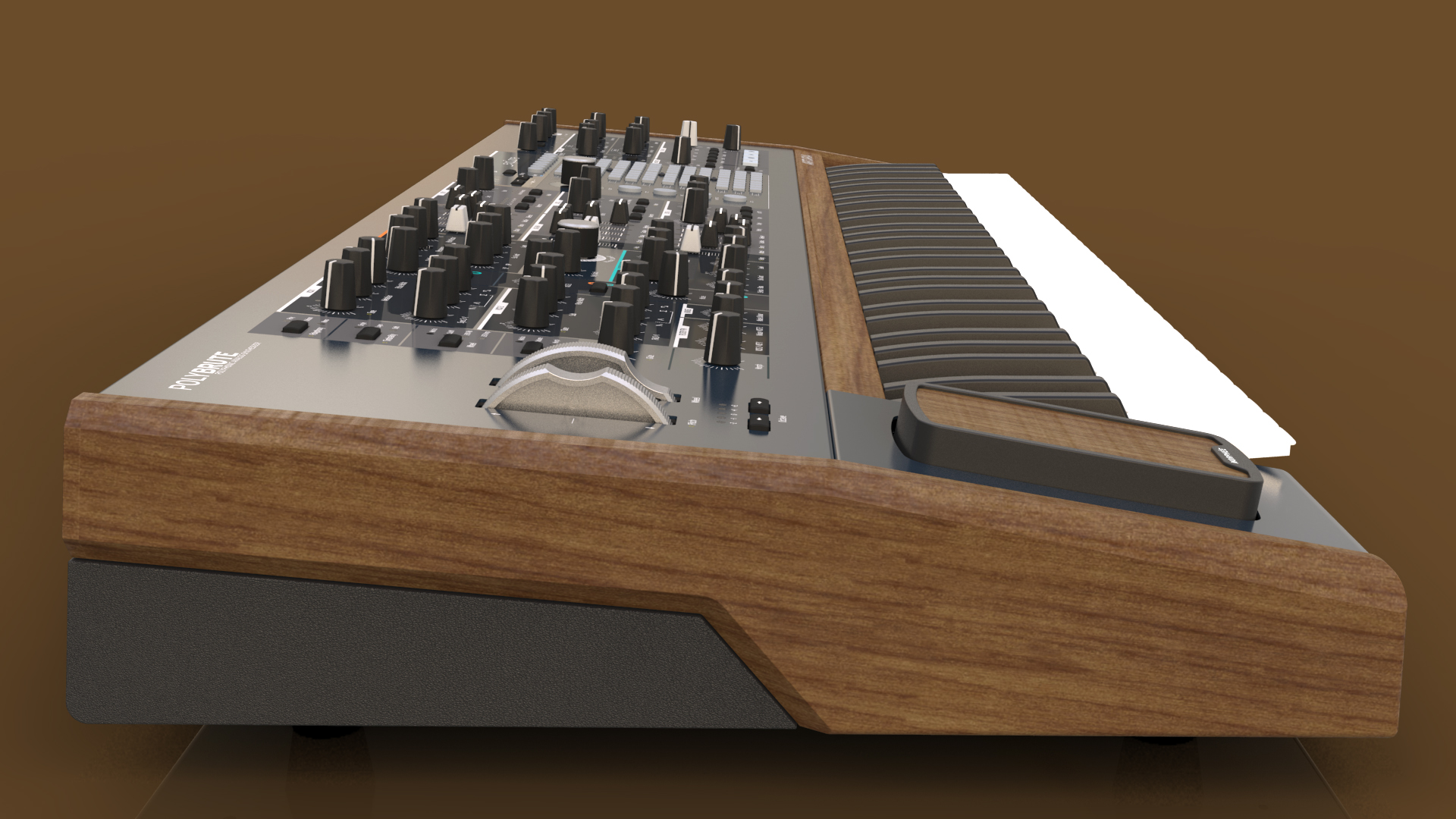
We first drew the MatrixBrute in 2015, and Arturia first showed the instrument at The NAMM Show 2016 in Anaheim, California, USA. The MatrixBrute is an impressive instrument, both because of its sheer abundance of functions and tonal possibilities, so plays in a higher league than previous members of the ’Brute family. We recognised this fact by combining wooden elements with well-known ’Brute design touches for the first time.
The design of the MatrixBrute is continued into the PolyBrute. The use of real wood gives the instrument a warm, analogue look. The pitch ribbon integrated into the wooden strip above the keyboard can be felt through a discrete, gutter-like recess. The tactile surface of the innovate MORPHEE controller to the left of the keyboard also has a wooden inlay.
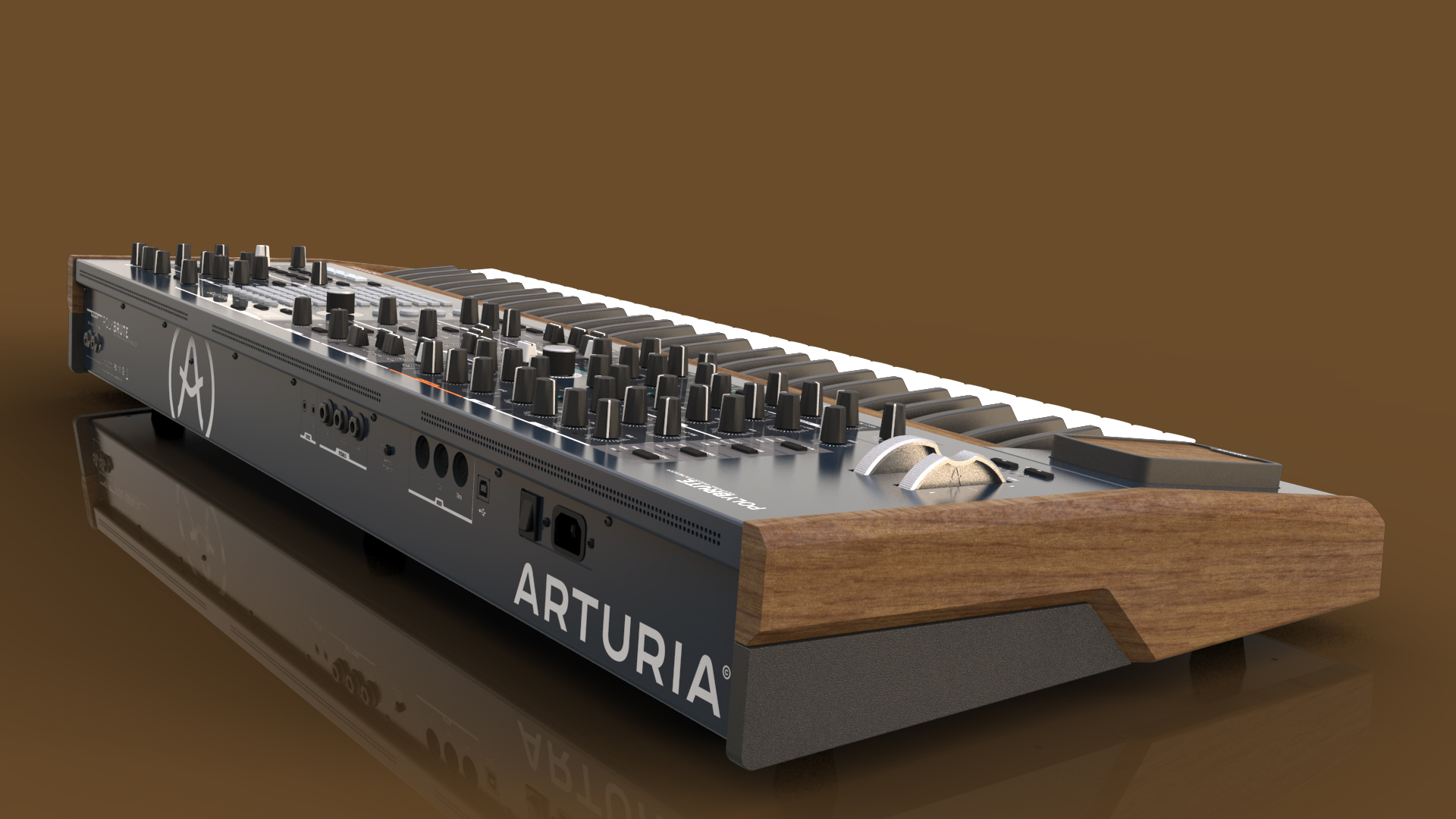
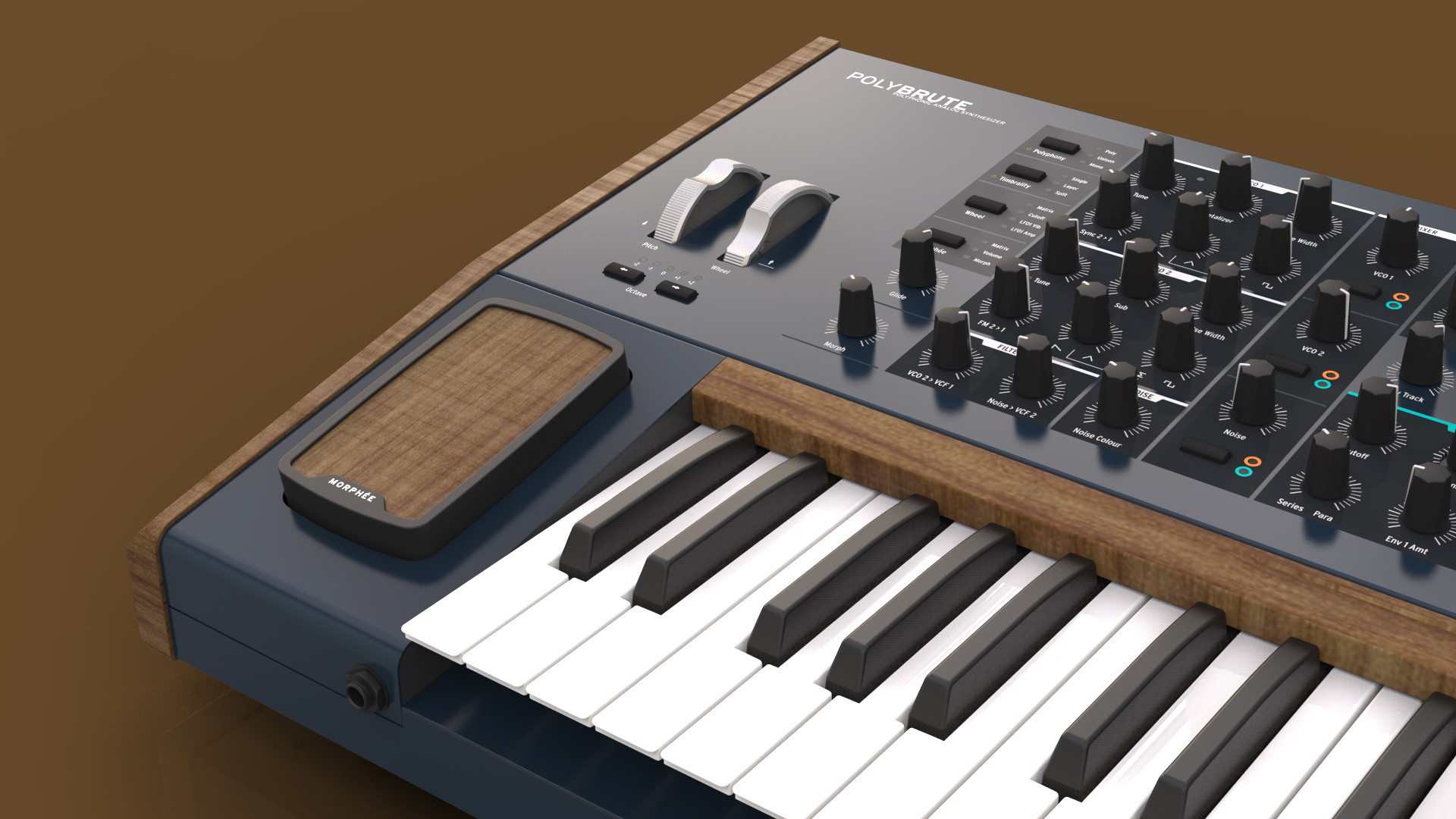
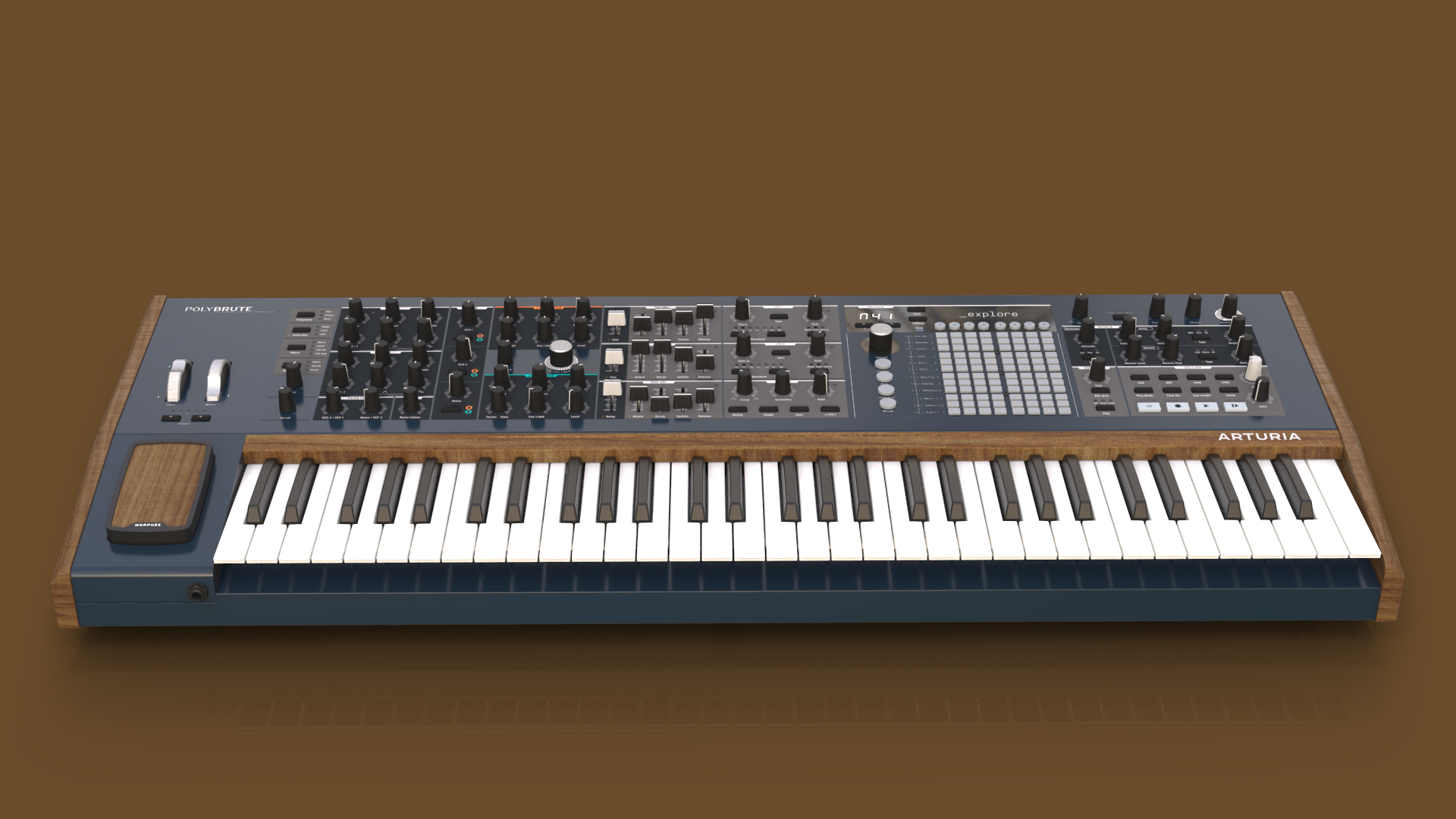
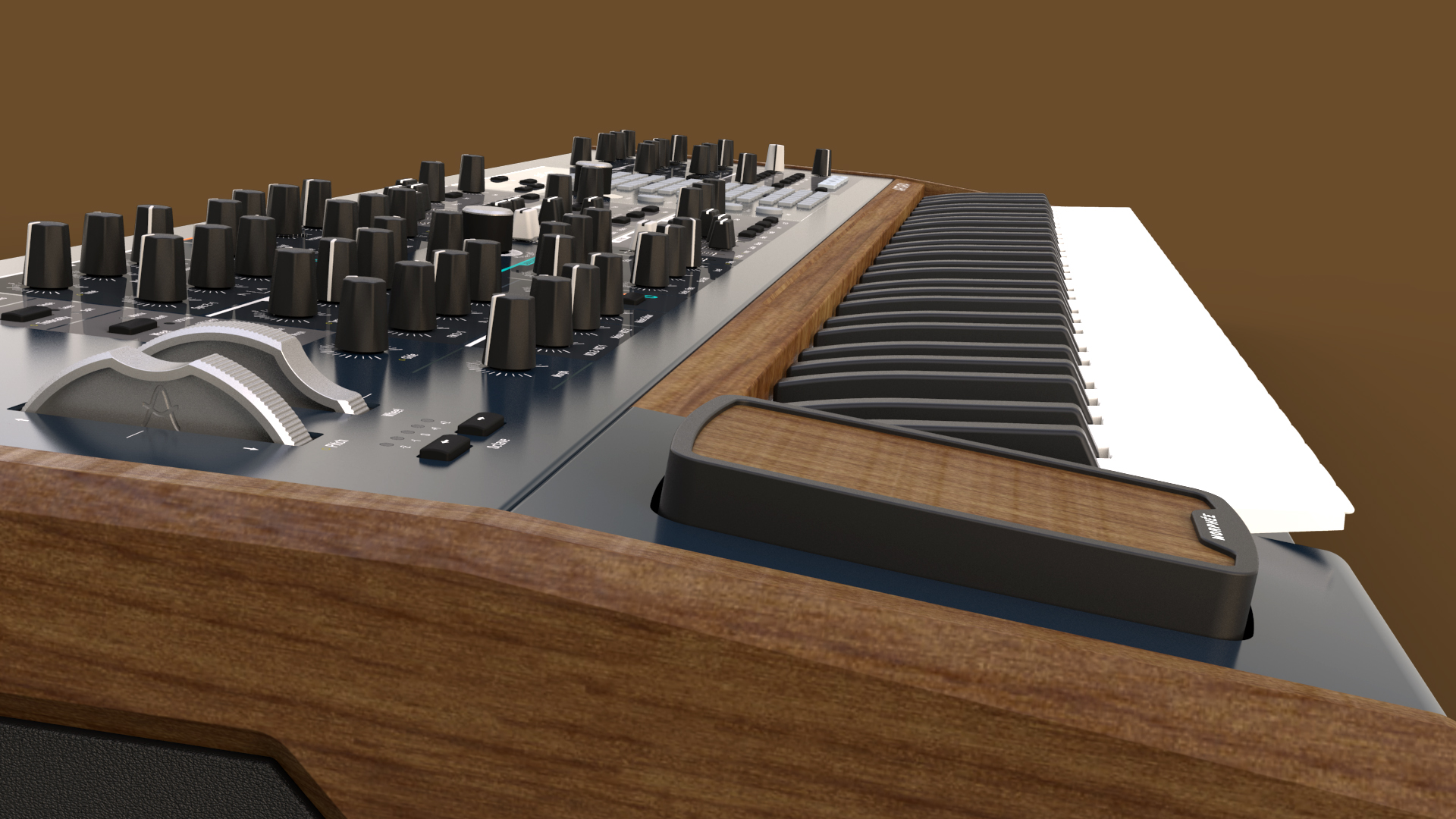
Segmenting the side panels visually detracts from the technically required housing height. The outer upper edge of the wooden side panel is given a chamfer — typical to the ’Brute family of instruments, tapered towards the back. The rear recess of the panel is covered with leather.
The signal flow of the instrument is projected onto the front panel in (left to right) direction of reading. The sound modules are segmented in the discrete colour backgrounds typical of ’Brute instruments. Thanks to the strikingly-staged key matrix, the user interface benefits from an unprecedentedly user-friendly implementation of a modulation matrix that is actually a complex synthesizer feature.

